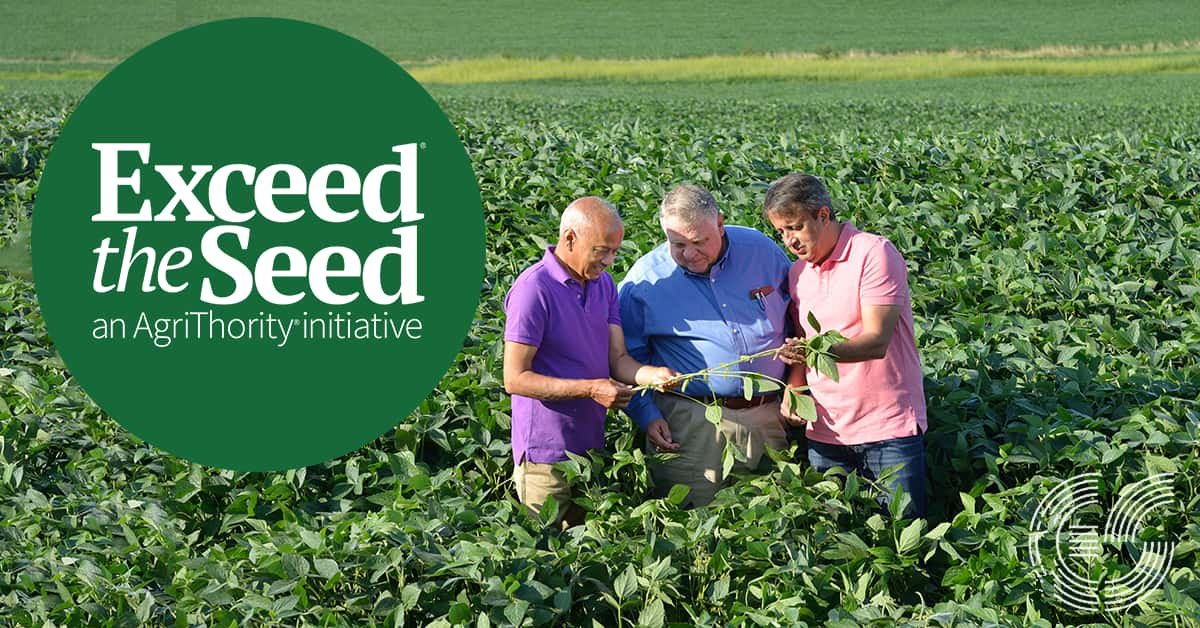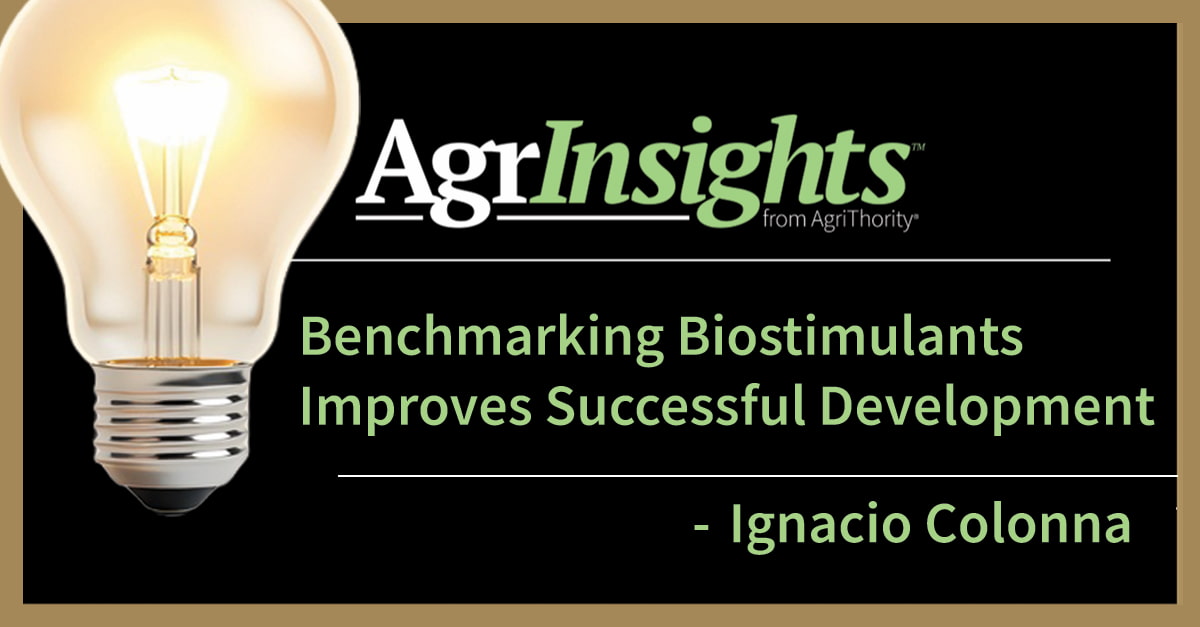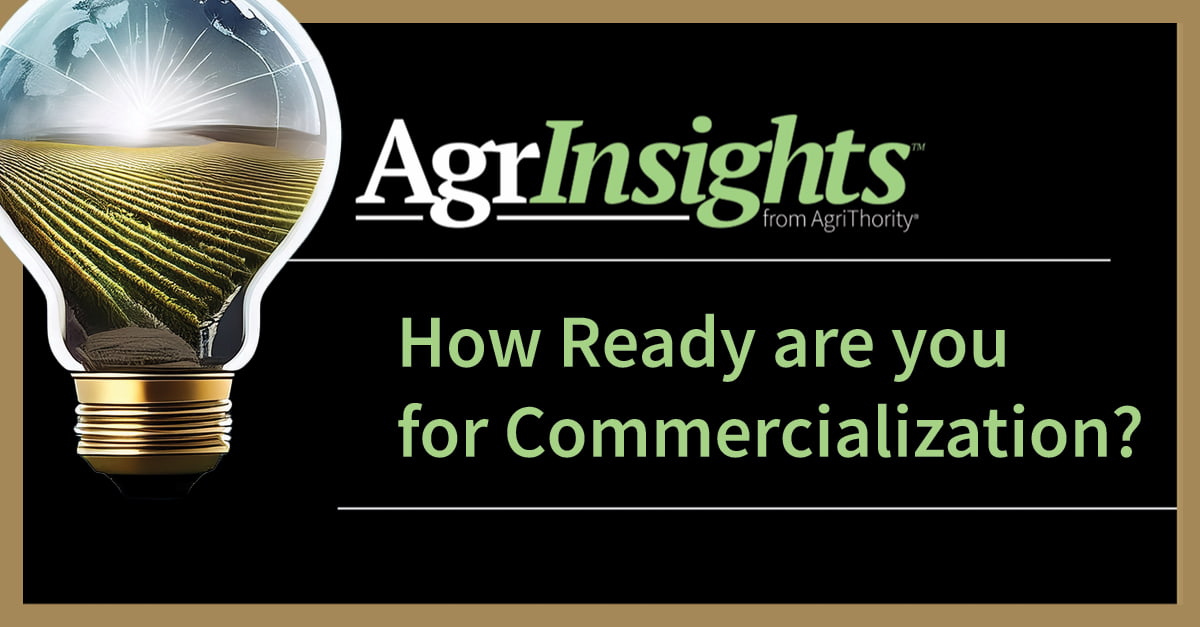
Advantages of seed treatments continue to expand with proven benefits of biologicals. Reducing the environmental impact is one major advantage of seed treatments. Sustainability practices have been around for thousands of years but have gained heightened consumer awareness in the last decade. Seed applied technologies also have a long history improving sustainability and help Exceed the Seed® potential. Continual development of biological seed treatment technologies double down on sustainability by combining traditional early seed protection with biological solutions.
Biological Seed Treatment Potential
Not only does seed treatment technology have a long history, but the addition of biologicals is expanding the innovations for seed applications. According to Fortune Business Insights, the Global Seed Treatment Market size was valued at USD 13.38 Billion in 2023 and is projected to reach USD 38.88 Billion by 2032 with a 12.54% CAGR from 2024 to 2032. This growth projection continues to offer potential for companies to develop and benefit from seed applied technologies. Additionally, biological seed treatments are expected to reach USD 1.7 Billion by 2025, according to Markets and Markets, with a CAGR of 11.9%.
“By and large, biologicals have the potential to see more success,” says Richard Shaw, AgriThority® Product Development Manager. “Seeds are usually stored in an environment where the microbe is going to be safe and not break down too quickly. It’s an ideal delivery mechanism for these high dollar seeds we have today.”
Active ingredient rates per acre are less for seed treatments than rates for the same active ingredient applied in-furrow, foliar or as soil broadcast or band treatment. Seed treatment also reduces exposure to non-target organisms in the soil or on plant foliage compared to other application methods. Some seed treatments replace additional preplant or post-plant trips across the field to apply fungicides, nematicides and other crop inputs thereby reducing fuel consumption, cost and carbon footprint.
“All seed treatments have a certain built-in contribution to sustainability because the old rule was, if you treat the seed, you treat it with about 10% of what you’d apply broadcast,” Shaw says. “You’re putting the product where it works, and you’re not treating area where it has no value.”
Seed Treatment Development Considerations
When developing seed treatments, five focus areas should be considered:
- Efficacy: A successful seed treatment must be effective at a relatively low use rate.
- Seed Safety: A successful seed treatment must not be phytotoxic. Seed safety is paramount as is efficacy. The rate must perform without damaging the seed. As the value of seed increases, the need for protection of germinating and emerging seedlings also increases. Seed treatments continue to play an important role in reducing early season problems that can lead to replanting. Getting a good stand on the first planting increases the opportunity for a more productive season.
- Compatibility: Seed treatments usually are applied with (or even formulated with) other products to provide a complete seed treatment package. The successful seed treatment product will not interfere with, or be interfered with, when mixed with other commonly used seed treatments. Also seed as a carrier of products has limited capacity. For example: the total volume of the seed treatment slurry should not exceed 7.5 fluid ounces per 100 lbs. of corn seed.
- Environment: Seed treatments are normally applied with colorants to mark the seed as treated. The color of the treatment can in some circumstances be adjusted to make the treated seed less attractive to birds or other wildlife.
- Quality management systems: Define the treatment process with safety in mind. How should treated seed be handled? What are the worker protection parameters? Ensure the information is provided to facilitate safe and legal treatment of seed, as well as necessary disposal of treated seed.
AgriThority® Seed Treatment Expertise
AgriThority® has a long history and deep experience in the development of seed-applied technologies and genome editing projects. Of the seed related product development work since 2008, more than 110 projects involved seed-applied biologicals. These include the full range from biofertilizers, biostimulants, and biofungicides to bioinsecticides, bionematicides, and biomitigants. With an international presence across many crops, new seed treatment product development can be planned and executed for multiple markets. The ability to market internationally is a key for product differentiation in the future, and working with AgriThority® gives companies a native guide into all the markets they are targeting.
When your new seed treatment is ready for development, turn to AgriThority® for the scientific business, market, and product expertise that can make the difference between a great idea and a breakthrough. Our global footprint, combined with our deep understanding of market and producer dynamics, helps move your innovation from the laboratory to market.


